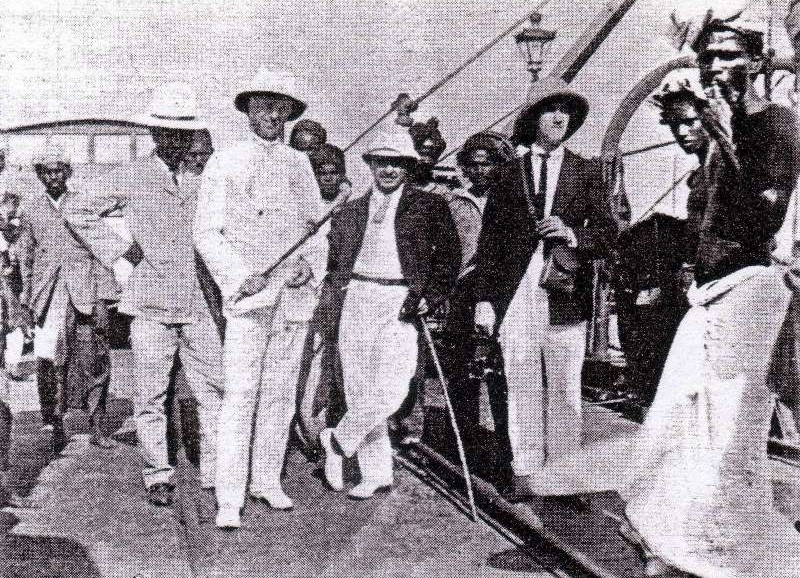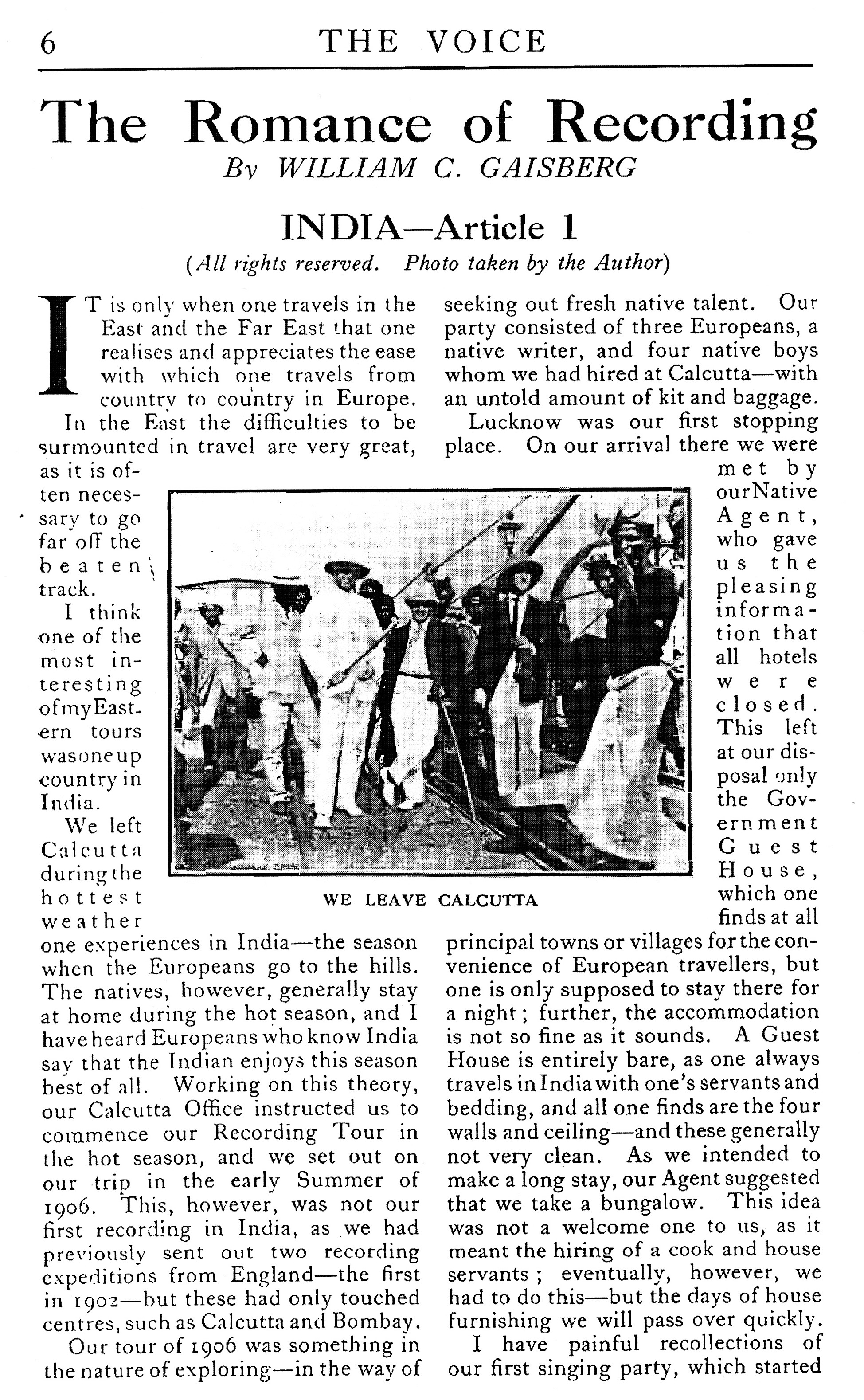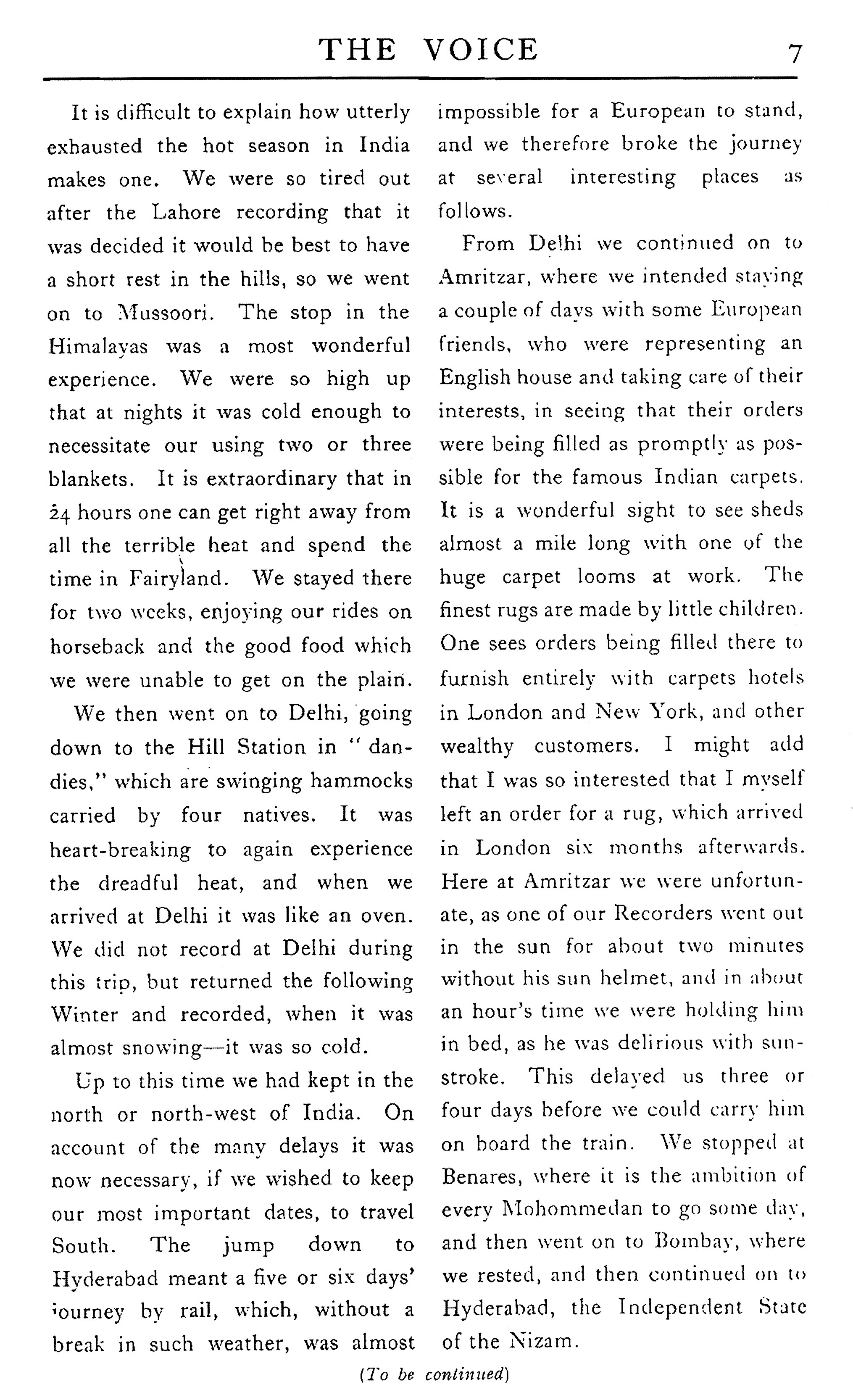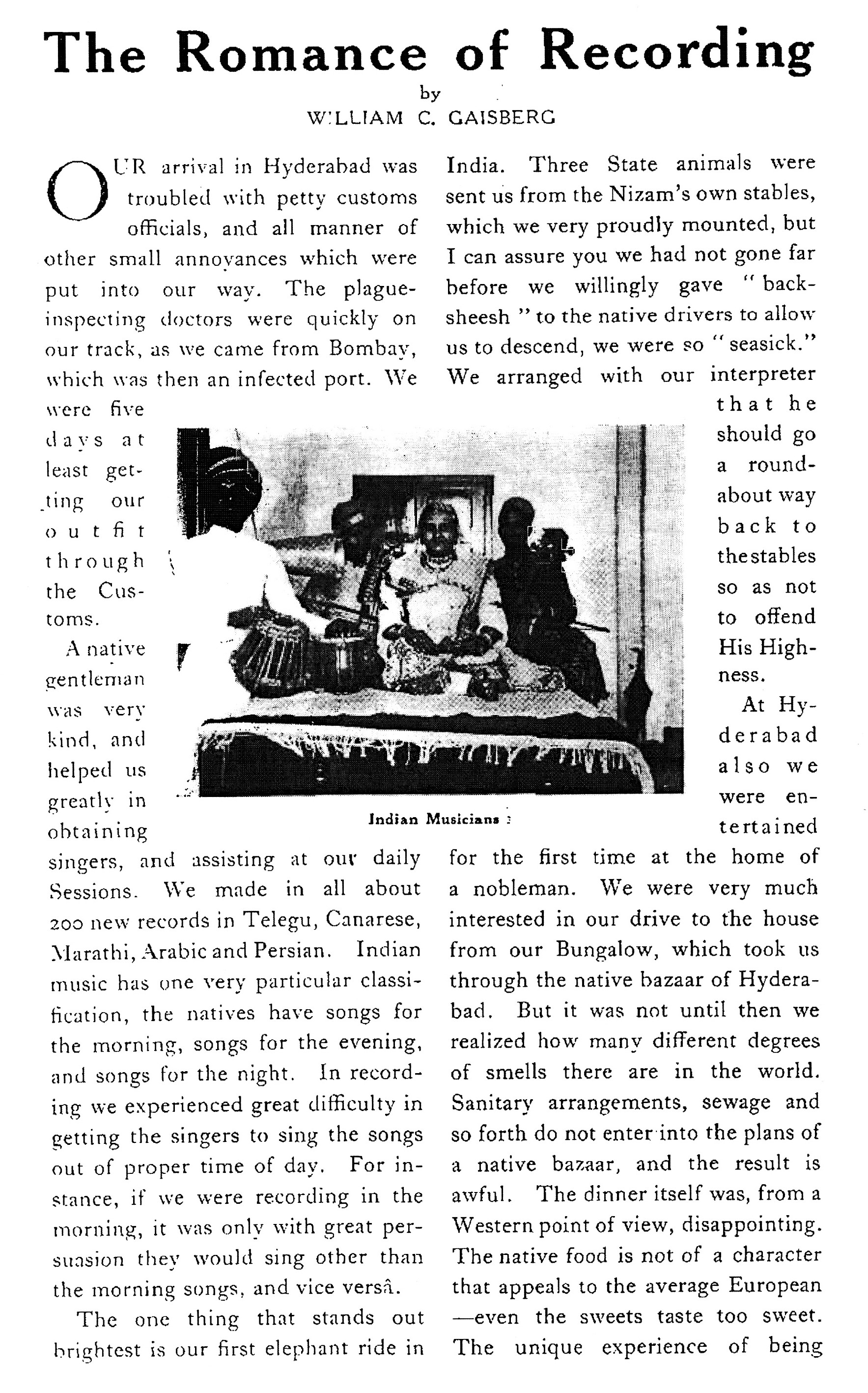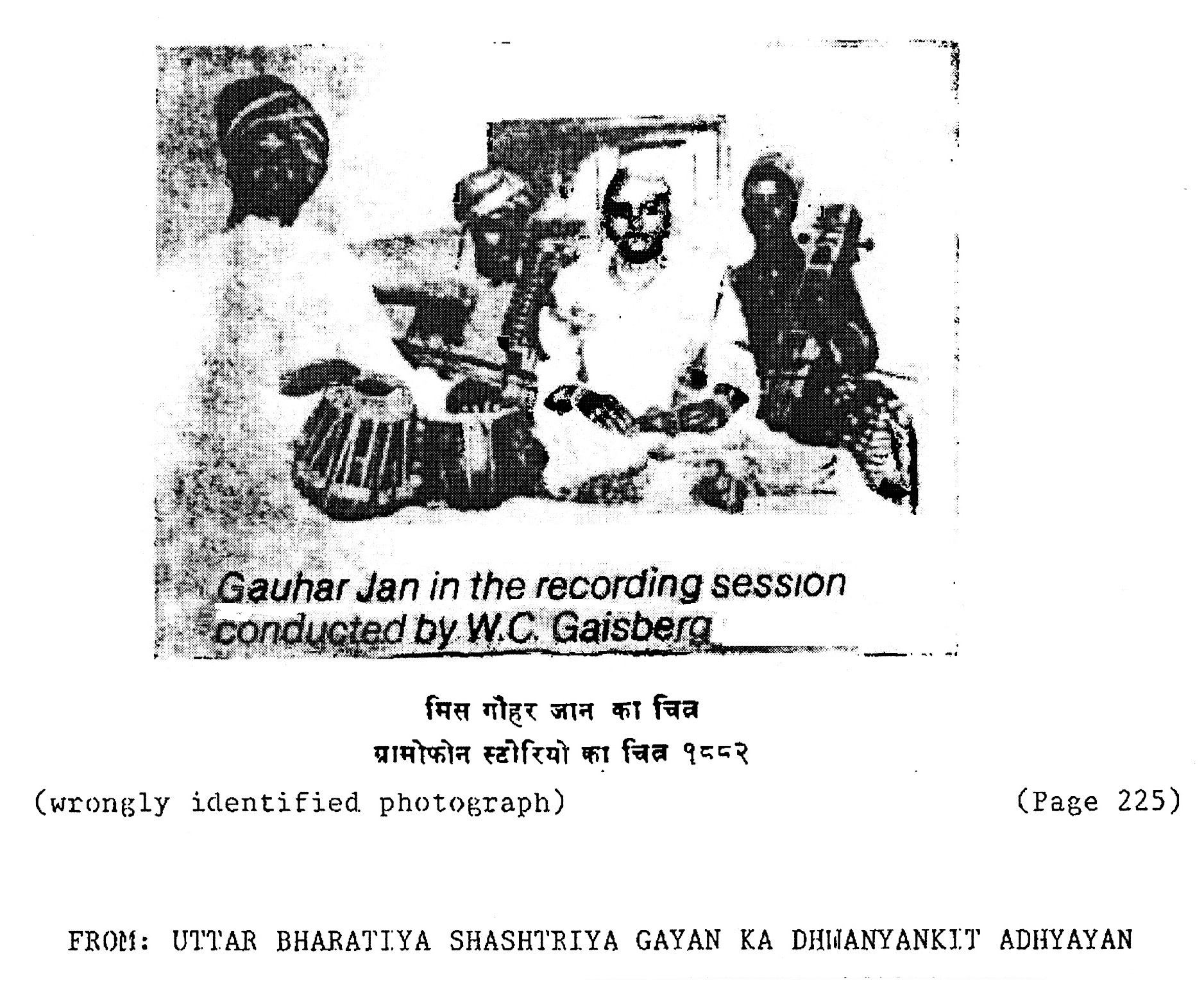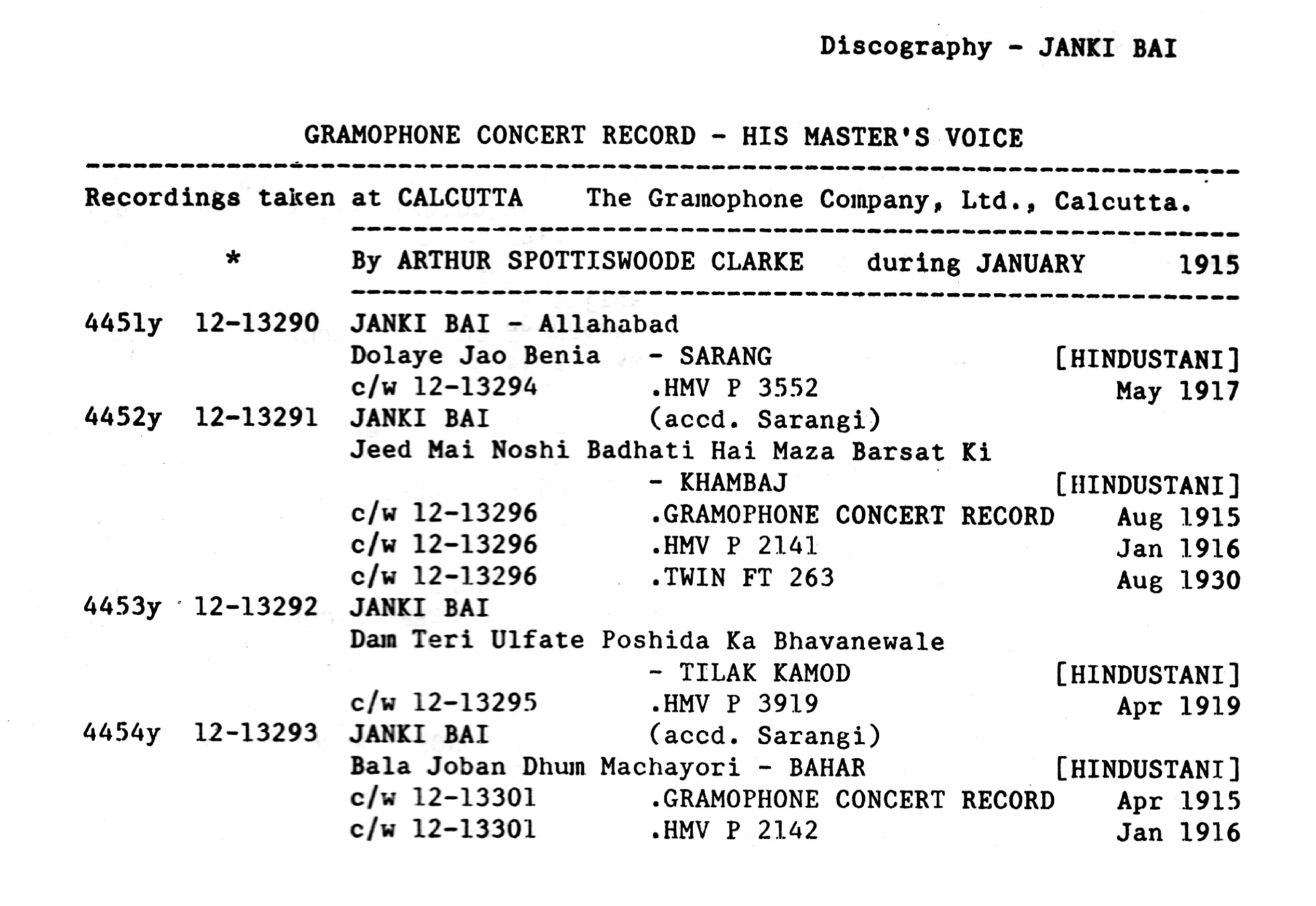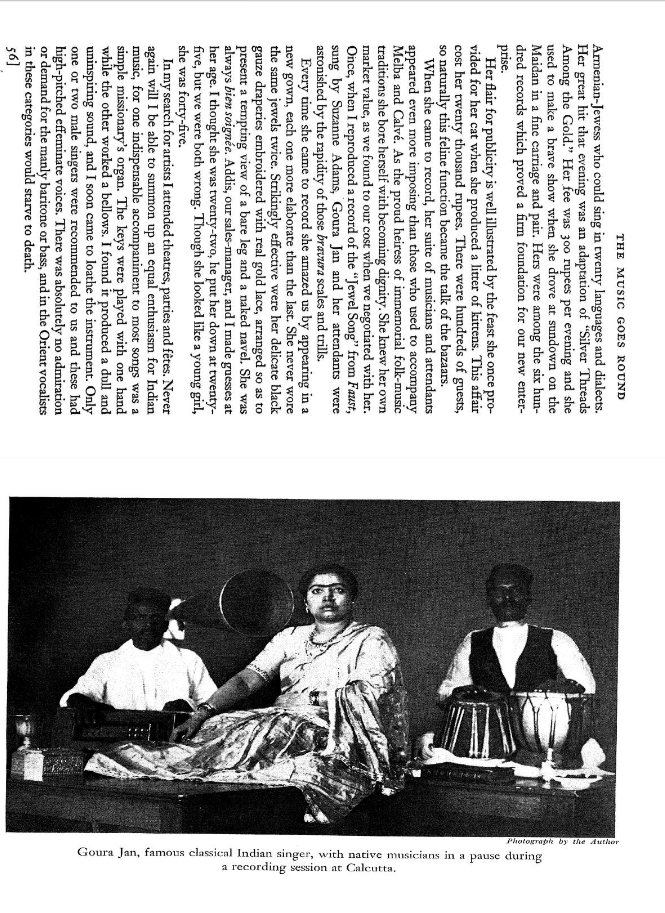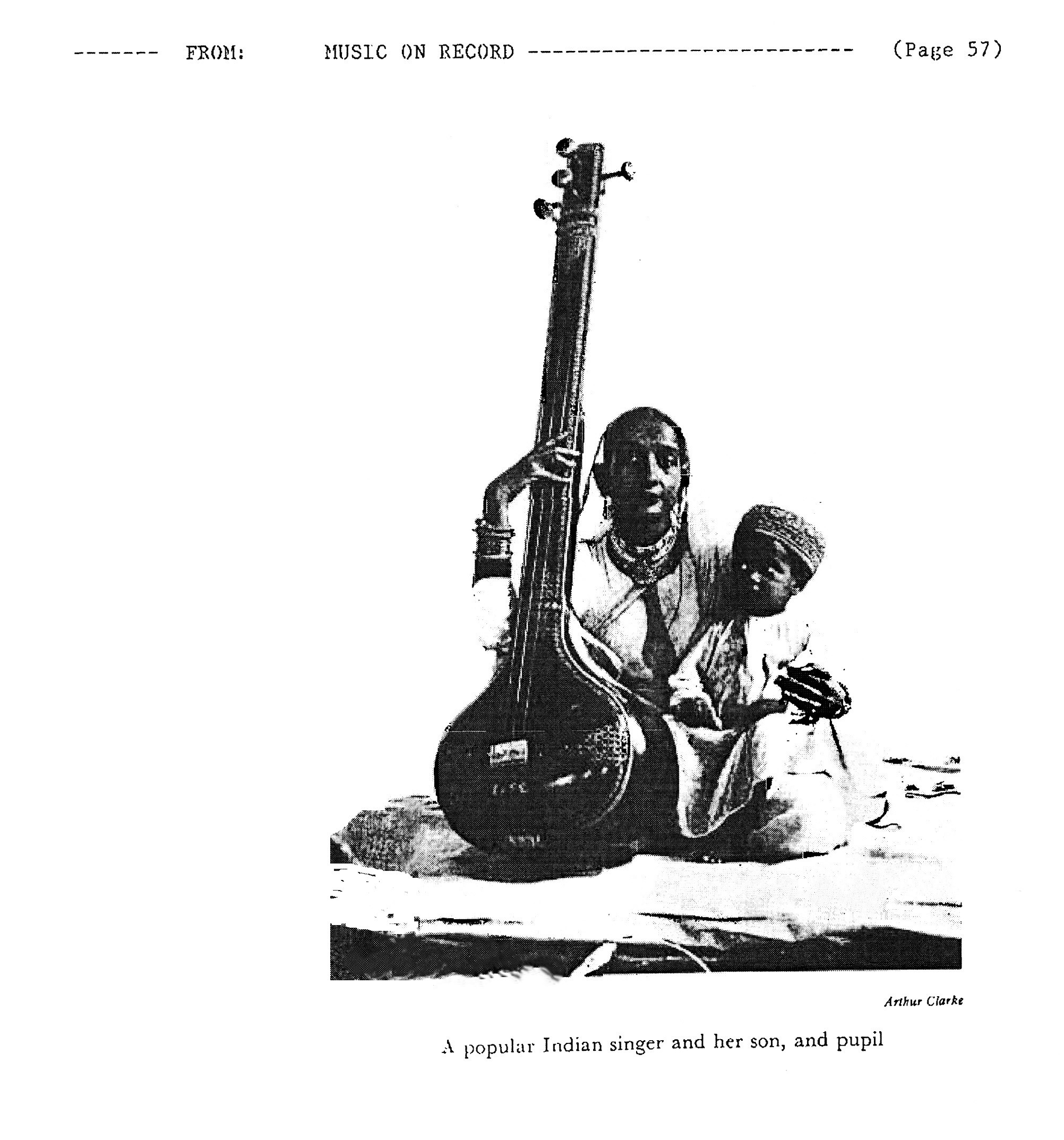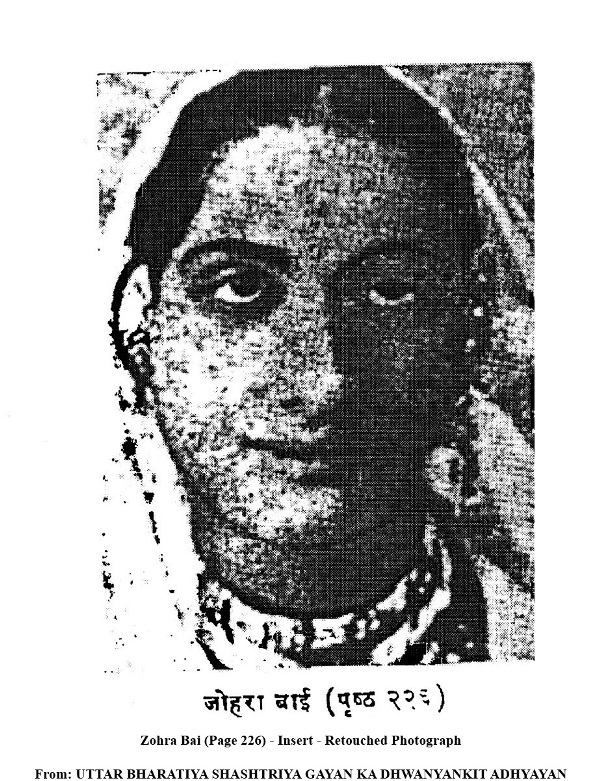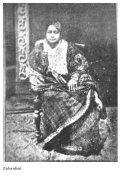THE VOICE
“THE ROMANCE OF RECORDING”
By William C. Gaisberg
INDIA – Articles 1,2 and 3
Published from February, 1918
Notes on the three Articles from ‘The Romance of Recording’
by Michael Kinnear
This series of articles under the title of – “The Romance of Recording” – by William C. Gaisberg, were published in – “THE VOICE” – the house magazine of The Gramophone Company, Ltd., Hayes, England, in three instalments from February 1918, and have been reprinted here by permission of EMI Archive Trust. This is an updated version of the original article previously published in 1995.
WILLIAM CONRAD GAISBERG, “Recording Expert” for The Gramophone Company, Ltd.
Photo: “The Gramophone Company’s First Indian Recordings, 1899-1907″
Author: Michael Kinnear, Page 33
“Between November 1902 and January 1908, The Gramophone & Typewriter, Ltd., had undertaken three recording tours in India.
William Conrad Gaisberg assisted by George Walter Dillnutt conducted the third recording sessions in India, starting in 1906. The third recording tour was broken into two parts with the first part beginning in Calcutta in April 1906, then proceeding to Lucknow, Ferozepur, then to Hyderabad and finishing up in Madras in July 1906. After some recordings in Rangoon, Burma, Gaisberg and Dillnutt continued onto Japan and Korea where recordings were taken on behalf of the Victor Talking Machine Company, Camden, New Jersey, the American sister company of The Gramophone & Typewriter, Ltd.
Following the Japanese and Korean recording sessions, William Gaisberg returned to Calcutta in January 1907 for more recordings at Calcutta. After Calcutta, the recording team continued onto Delhi and then to Bombay to conclude these recording sessions. Although 7-inch recordings were taken in both Japan and Korea, none were taken in India. From the third recording tour approximately 1200 – 10-inch recordings were taken along with 150 – 12-inch recordings.”
Willian Conrad Gaisberg (center), George Walter Dillnutt (right), Calcutta
“We Leave Calcutta” [1906]
“THE ROMANCE OF RECORDING” by William C. Gaisberg
Notes on the Articles by Michael Kinnear
WILLIAM CONRAD GAISBERG (1878 – 1918) was the younger brother of Frederick William Gaisberg (1873 – 1951) and like his elder brother was a ‘recording expert’ of The Gramophone Company, Ltd. Will Gaisberg’s recording activity was essentially confined to Europe, but during 1906 and 1907 he conducted a recording tour, assisted by George Walter Dillnutt on behalf of The Gramophone & Typewriter, Ltd., to India, Japan and Korea, from May 1906 through to March 1907.
The – narrative of his recording tour of India describes the first half of his ‘expedition’ to India beginning at Calcutta during May 1906. Following the incidents described in the articles, Will Gaisberg travelled onto Japan and Korea where he took recordings on behalf of the Victor Talking Machine Company, Camden, New Jersey, United States of America, before returning to India at the beginning of 1907 where he continued the recording sessions at Calcutta, Delhi and Bombay, and thereafter returned to England.
A couple of months after these articles were published in 1918, Will Gaisberg died, having fallen victim to influenza following his return from Lille in France where he had recently taken recordings of the sounds of the guns on the Western Front during the Great War. His narrative of that experience was also published in – The Voice, for the issue of December 1918.
The discography of the recordings taken by Will Gaisberg on his Indian tour of 1906 are given in detail in my book “The Gramophone Company’s First Indian Recordings – 1899 to 1907” – Published Independently: Bajakhana – Michael Kinnear, Second Edition, 2016.
ARTICLE 1 – 1918
ARTICLE 2 – 1918
Of particular interest in the articles are the five photographs used to illustrate the three articles, particularly the unidentified photographs in Article (2) – ‘Delhi Beauty’ and Punjab Beauty’ – of which the pictured ladies remain unidentified to this day – but is indicated at the start of Article (2) as “Photos taken by the Author” [William Conrad Gaisberg].
Article 2 - Unidentified Ladies
ARTICLE 3 – 1918
More puzzling are the two photographs illustrating Article (3) which show Miss Janki Bai of Allahabad – above the caption – Indian Musicians: on the opening page of the article (page 4 in “The Voice”). This photograph has been wrongly attributed on a number of more recent publications as being a photograph of Miss Gauhar Jan of Calcutta.
Article 3 - "Indian Musicians"
In article (3) the photographs have not been credited directly to Will Gaisberg,and the publication of this photograph in 1918 of Miss Janki Bai of Allahabad precedes the use of the same photograph in the American edition of Fred Gaisberg’s book – “The Music Goes Round” – Macmillan, New York, 1942.
In – “The Music Goes Round”, Macmillan, New York, 1942, the photograph – (facing page 58) is correctly identified as being of “Janki Bai with Indian musicians, in a pause during a recording session at Calcutta” – with the credit being given to Arthur Clarke [Recording Expert] as photographer.
Correctly Identified Photograph, "The Music Goes Round"
Excerpt: Janki Bai Discography by Michael Kinnear
The confusion over the proper identity of the “Janki Bai” photograph has clearly arisen – simply because Fred Gaisberg referred to her in his book “The Music Goes Round” (page 57) and readers have – presumed – that he took recordings of Janki Bai during – HIS – recording sessions at Calcutta in 1902 – – he did NOT.
Curiously, the photograph “Goura Jan” included in – “The Music Goes Round” Macmillan, 1942, (opposite page 56) is credited to Fred Gaisberg as [Photograph by the Author]. While in the English edition of the same book – under the title of – “Music on Record”, Robert Hale Limited, London, 1947, credits the same photograph (facing page 56) – to Arthur Clarke.
"The Music Goes Round" Photograph by the Author [F.W. Gaisberg]
Article 3 - Photograph not accredited
In this article, the photograph is simply captioned as “Indian Lady with Native Instrument” and appears to have been the first known publication of the photograph (1918).
The photograph is not accredited in the article – but the same photograph appears in the English edition of Fred Gaisberg’s book – “Music on Record”, Robert Hale Limited, London, 1947, (facing page 57) – – and replaces the photograph of Janki Bai that had been used in the American edition of the book.
"Music On Record" London,1947 ed. Photograph credited to Arthur Clarke
The caption of the photograph in Fred Gaisberg’s book is “A popular Indian singer and her son, and pupil” – – is credited to Arthur Clarke.
The same photograph has been published by Joep Bor and Philippe Bruguiere in their book – “Masters of Raga, Haus der Kulturen der Welt” / Musée des Arts Asiatiques Guimet, Berlin, (n.d. – c.1990) on page 36 – attributing the photograph (no.45) to being that of – Zohrabai of Agra (1868-1913).
The claim that this photograph is that of Zohra Bai of Agra – appears to have been based on an ‘extract’ of the face of the lady – in a greatly touched-up version that has circulated in India.
The touched-up version of the photograph has been published in ‘Uttar Bharatiya Shashtriya Gayan Ka Dhwanyankit Adhyayan, Dr. Rama Kant Dwivedi, Sahiya Ratnalay, Kanpur. 1987, (opposite page 226).
[INSERT] Retouched Photograph "Zohra Bai(Page 226)" From: "Uttar Bharatiya Shashtriya Gayan Ka Dhwanyankit Adhyayan"
"Uttar Bharatiya Shashtriya Gayan Ka Dhwanyankit Adhyayan" Cover with retouched photograph of "Zohra Bai"
Zohra Bai of Agra, was first recorded by Fred Gaisberg at Calcutta during April 1908 (at about age 40), and later by George Walter Dillnutt at Lucknow in November 1909, followed by another recording session at Delhi in November 1910. Zohra Bai of Agra had been signed to a contract with The Gramophone Company, Ltd., Calcutta on 5 February 1908 to provide 25 recordings per year – with the contract expiring on 4 February 1911.
The contract was not renewed – and the recordings she gave to the company in the November 1910 sessions at Delhi were her last recordings for the ‘Gramophone’.
Zohra Bai was certainly NOT recorded by Arthur Spottiswoode Clarke in India – during his stay there between 1913 to 1915, so the attribution of the photograph to him and how he came to be credited to the photograph may be open to debate – as to who the photograph is really of.
THE OBJECT – of this article is not to question the beliefs or proponents who might have a different point of view (or claim) about the authenticity of the photographs – but rather to consider the historical and research factors pertaining to the matter, and I thank Prof. Joep Bor and Rantideb Maitra – in particular for their patience and views in discussion on the subject of the photographs.
MICHAEL KINNEAR
RELATED ARTICLES
ZOHRA BAI – AGRAWALE DISCOGRAPHY.
Zohra Bai of Agra is often referred to as one of the greatest singers of India performing at the turn of the century. Very little is known of her life and most references about her musical prowess appear to be more anecdotal than fact. According to some reports she was born in Agra in 1868, and received her musical training from Ahmad Khan a vocalist and sarangi player also of Agra. […]
 MISS GAUHAR JAN – DISCOGRAPHY.
MISS GAUHAR JAN – DISCOGRAPHY.
‘Perhaps the best selling ‘gramophone celebrity’ of the time. Miss Gauhar Jan of Calcutta, declined to be contracted to any recording company and provided her recordings to the various sound recording concerns on a strictly ‘cash’ basis – without any consideration for ‘royalties’ on sales, […]




